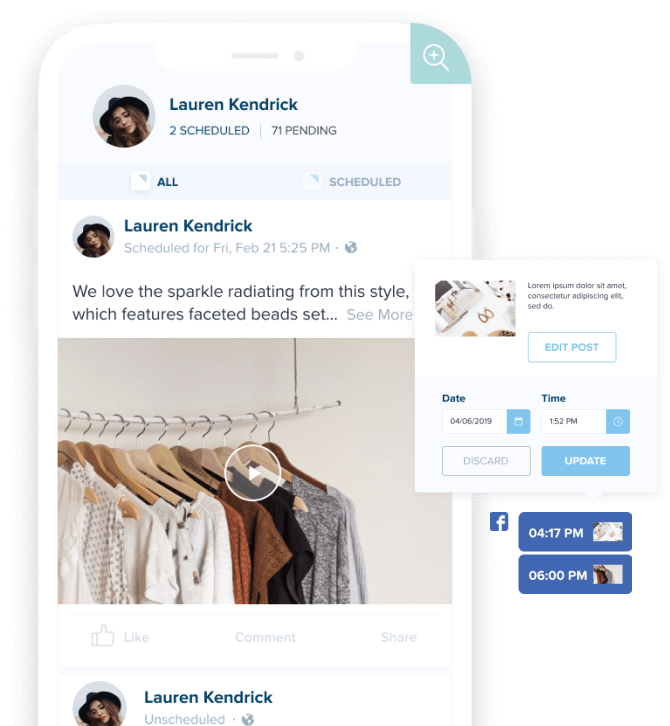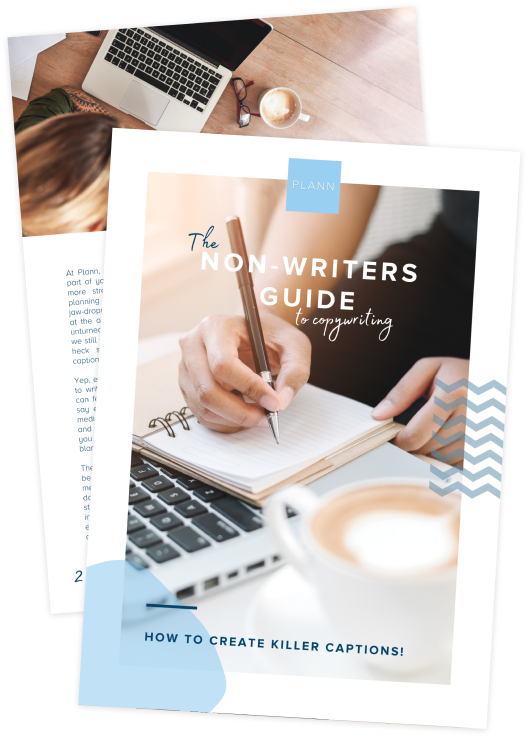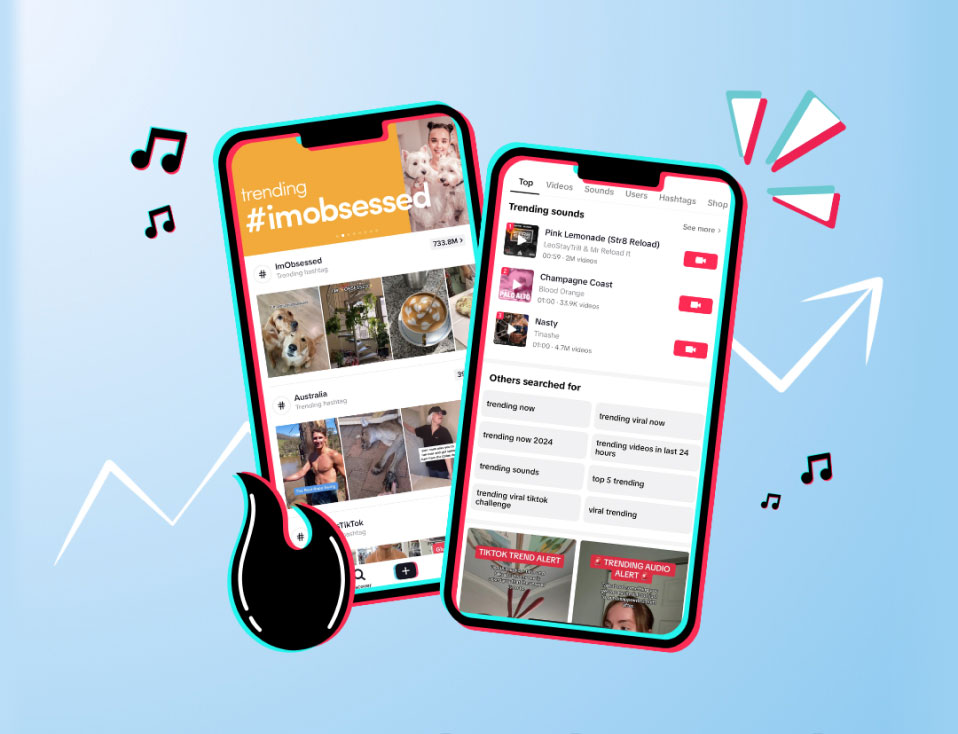Quick question: When did you last look at your Facebook page?
I mean, really looked at it.
• Is your branding up-to-date?
• Are you posting content your audience wants to see?
• Is your schedule set up for optimal engagement?
If those questions left you with a serious case of the “uhhhhhhs”, you need a Facebook business page audit, my friend.
It will help you identify any issues holding your account back, clarify what you’re doing right (and wrong) and help you tweak your strategy to meet your Facebook goals.
Sound good?
Let’s jump into how to audit Facebook pages and why keeping these pages up-to-date is important.
How to Audit Your Facebook Business Page (Step-By-Step)
Luckily, Facebook audits aren’t as scary or intense as you might think. In fact, running an audit is essentially about checking the set up of your Facebook business page, reviewing your page information and ensuring you’ve got all the settings in place to set your business up for success.
Set aside one hour and you’ll power through these three steps and walk away from your laptop with a clear plan on what to do next to improve your FB strategy.
Step 1: Facebook Pages’ Profile Audit
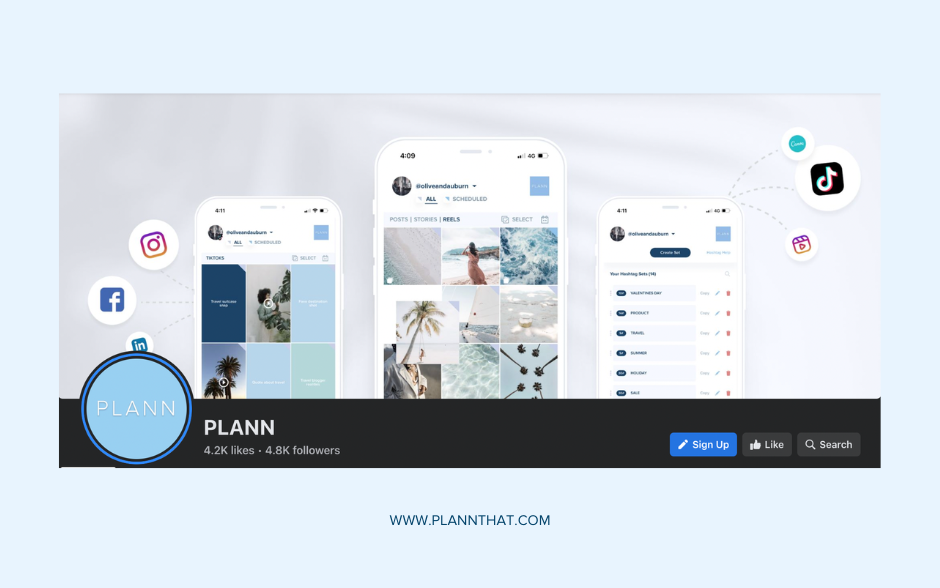
Let’s take it back to the basics on optimizing Facebook business pages.
55% of brand first impressions are visual. It will influence if someone likes your page, and it’s a crucial first step in landing a sale down the line.
What are the most important elements of your profile audit?
Profile Picture
If you’re a business, use a logo or a professional headshot. This icon or photo will help you to build brand recognition with potential followers and customers. When someone can recognise your business without seeing your name, it amplifies the know, like, and trust factor.
Cover Photo
With a bit more real estate than a profile picture, your cover photo is essential to your Facebook marketing strategy. You can use the space to show off your brand personality, advertise new products, or draw attention to a specific call to action.
Hot tip: make sure the leverage your brands fonts and colors in your cover photo to give your Facebook page a curated, branded look.
Action Button
An action button lets you personalize your call-to-action. Facebook gives you a wide range of options, including “sign-up”, “book now”, “send message”, “get tickets”, and “learn now”. It’s a powerful way to encourage your followers to engage with your brand outside of Facebook, visit your website, and make a purchase.
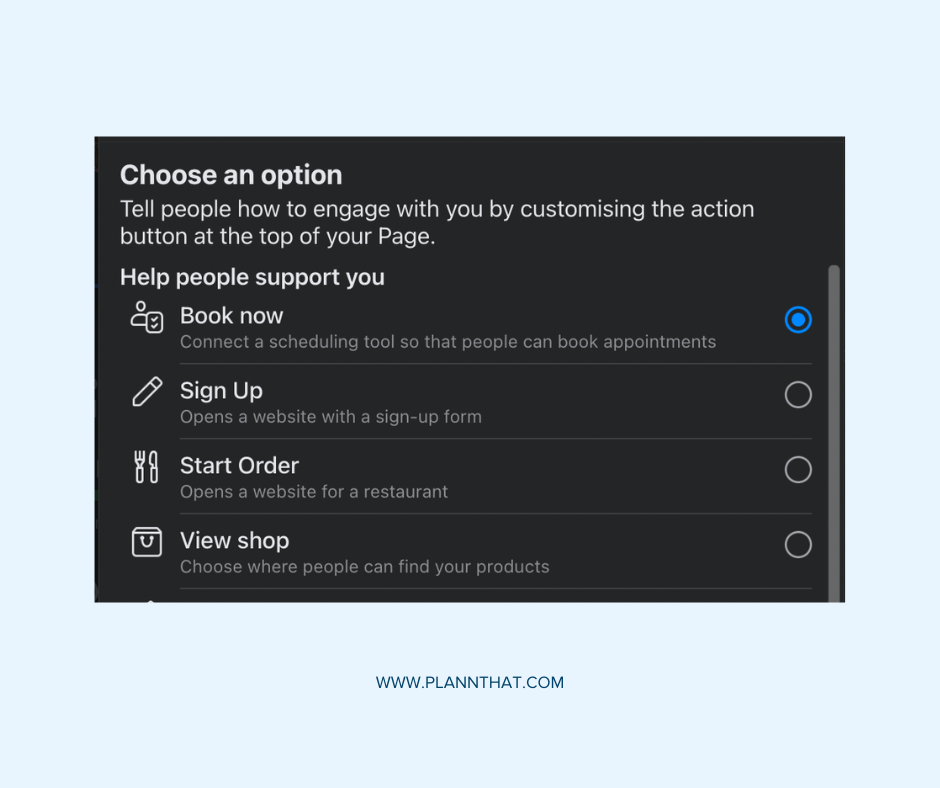
Step 2: Facebook Pages’ Content Audit
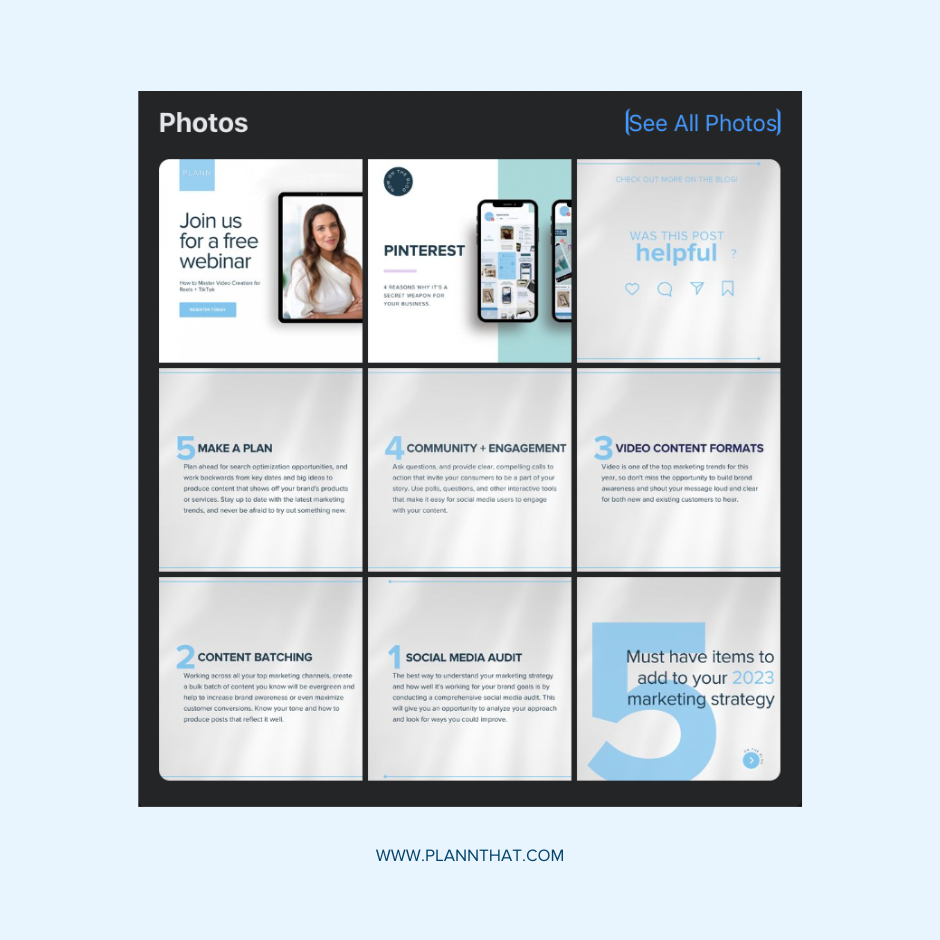
Once your Facebook page looks its best, move on to your Facebook content.
There are two things you want to focus on for this section of your Facebook page audit:
1. Your branding
2. Type of content you’re posting
Let’s break it down.
Visual Branding
A branding audit includes your brand colors, image sizing and optimization, and overall brand cohesiveness. To create recognition, you need to make sure your Facebook page is consistent with your brand’s look and feel.
This includes ensuring the images and videos you share are cohesive, using the same brand font, and nothing is pixelated.
Brand Voice
This part is all about reviewing the brand voice of your captions. If you’re writing in a serious, corporate tone in one post and then dropping Gen Zisms in the next, your potential followers will find it jarring. It creates a disconnect and stops people from trusting your brand.
Our tip? Spend some time jotting down a few adjectives that best capture your ideal brand voice, along with some example phrases and taglines. When crafting your next Facebook caption, you can come back to these guidelines to help you craft captions that are on-brand and engaging.
Content
Your content is the type of posts you share on Facebook (such as video, image, text). Here, you’ll want to dive into your Facebook Insights and discover which format gets the most engagement. If your audience loves your memes, post more! If no one engages with your lengthy text-based posts, nip those in the bud.
Understanding why specific pieces of content perform well and why other posts tank is crucial. It helps you hone in on what your audience likes, what is valuable, and what is moving the needle for your business.
However, check your audience demographics before you cull a specific content format. If you’re attracting Boomers, but your target market is Gen Z, you won’t have accurate data for your marketing decisions.
The same goes for running a Facebook ads audit. Before running your next campaign, jump into your Facebook business manager to review which content formats performed the best (and which you should skip moving forward).
Step 3: Facebook Scheduling Audit
The final step in your brands’ Facebook audit is your schedule.
At this stage, you want to use your pages’ Facebook insights inside your business suite to answer questions like:
• Post Frequency: How often are you posting? Should you post more or less?
• Post Engagement: What is your engagement rate? How does it compare to your competitors?
• Timeliness: When is the best time to post? Are your followers online in the early morning or late evening? Is there a specific day of the week that gets the most engagement?
After completing your Facebook scheduling audit, you’ll have a better idea if you’re posting at the right frequency and time to maximize engagement from your audience.
Improve Your Facebook Marketing Strategy with Plann
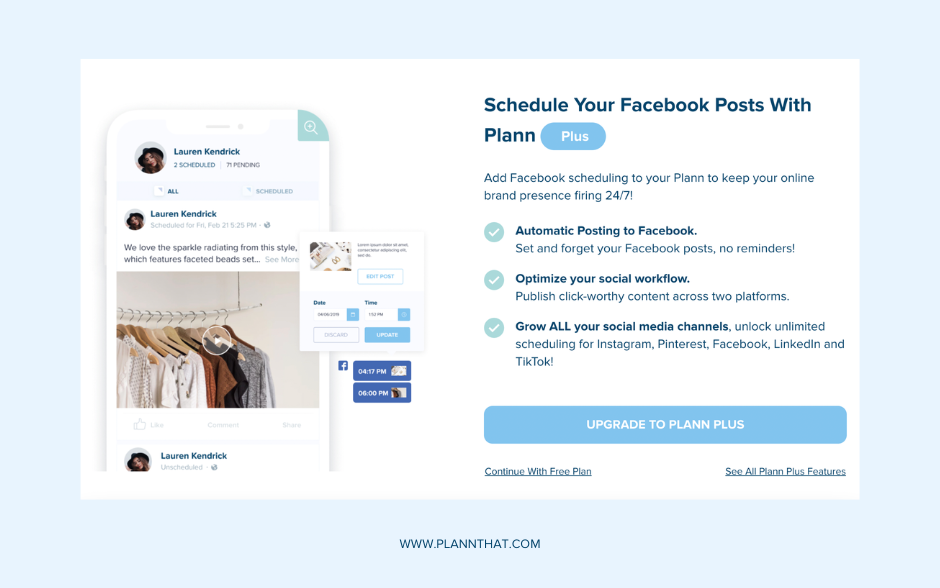
Ready to implement your Facebook pages’ audit findings into a winning strategy?
Sign up for a free 7-day trial of Plann Pro today and schedule all your social media posts from one easy-to-use platform. With a single click of a button, you can cross-post on Facebook, LinkedIn, Instagram and Pinterest.
That’s not all.
Need to create a graphic for your next Facebook post?
Use our built-in Canva integration and seamlessly create optimized graphics for your Facebook page and other social media platforms.

